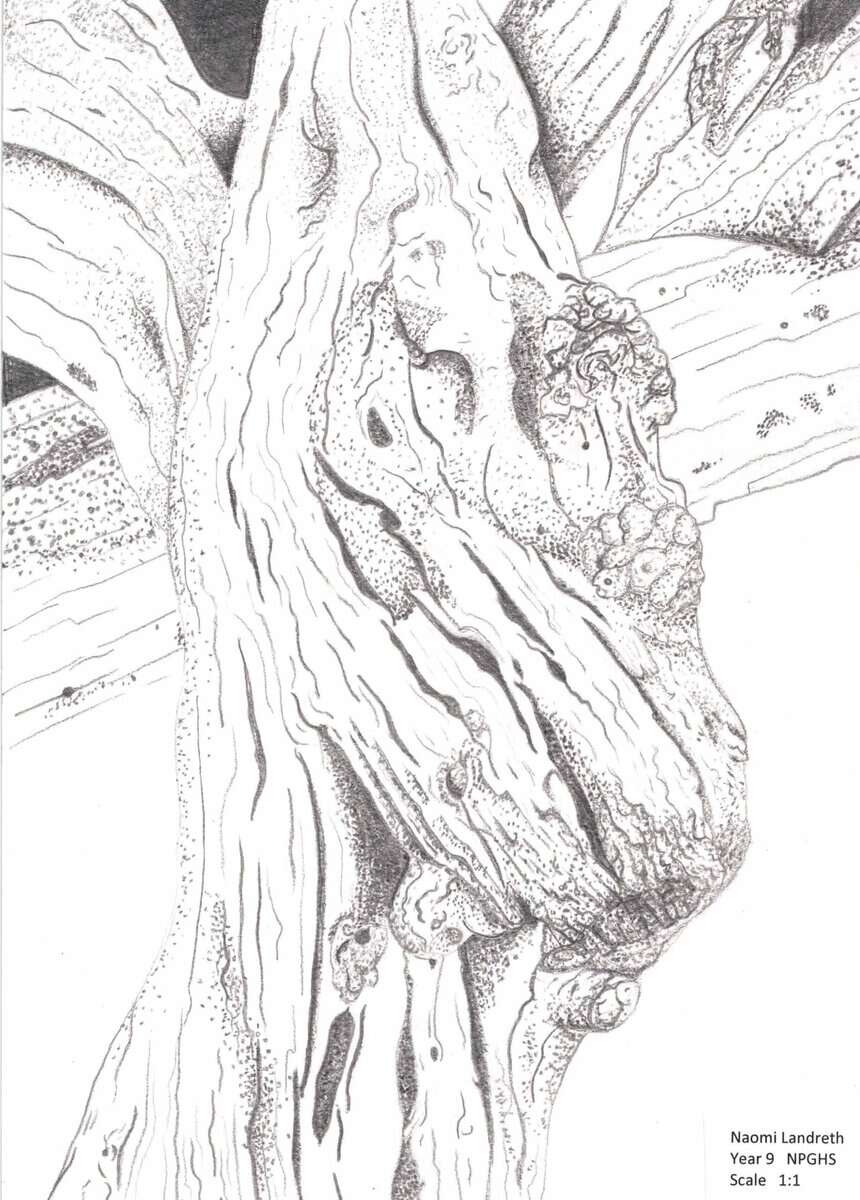
Provided is an example of a 2021 winning entry by Naomi Landreth (Yr 9)
2021 Theme: Driftwood
Our Judge’s Tips
Visually describe what you see, supporting both scientific observation and critical thinking skills. Scientific drawing is a lesson in seeing (observation) as well as in drawing

